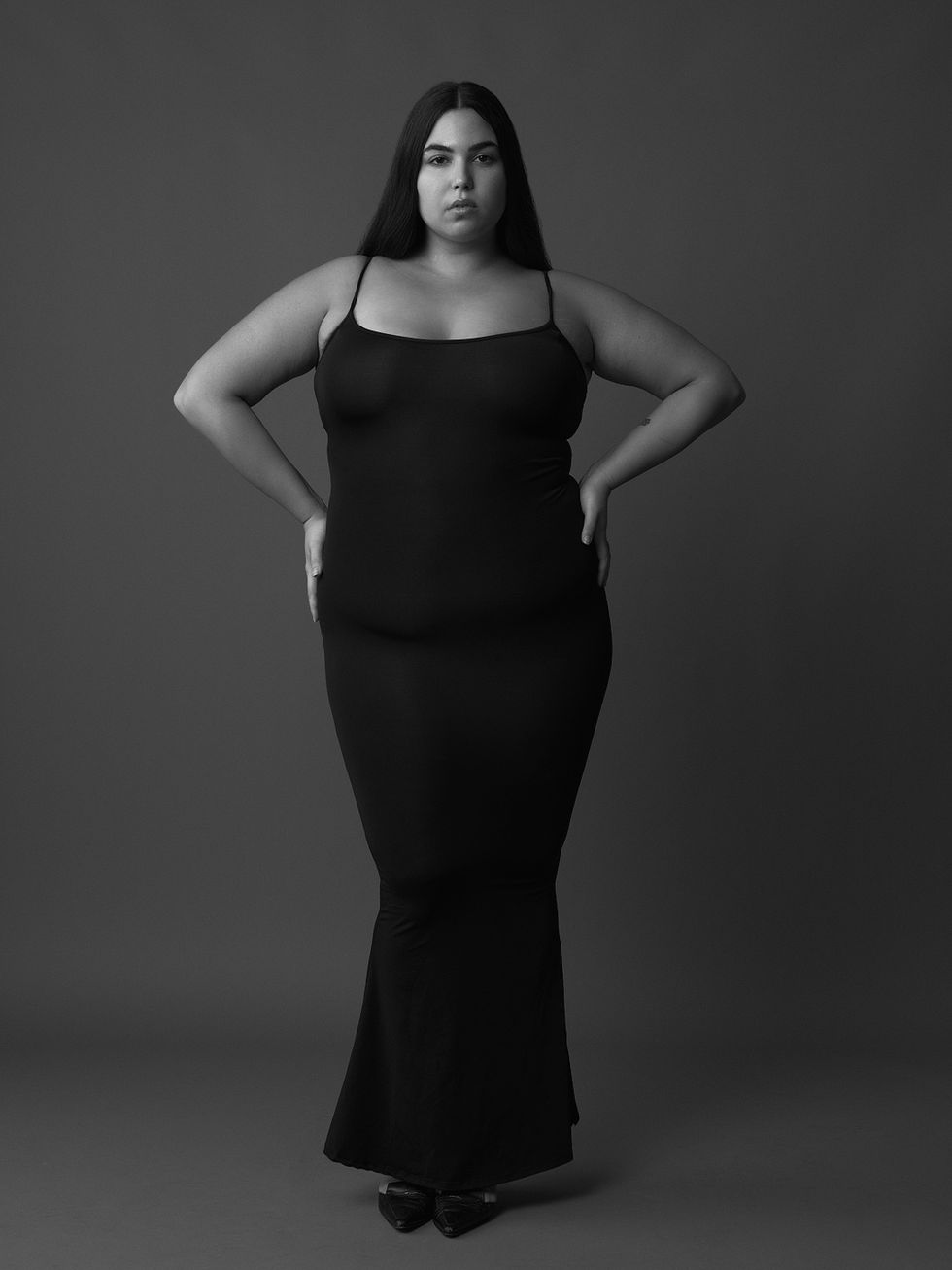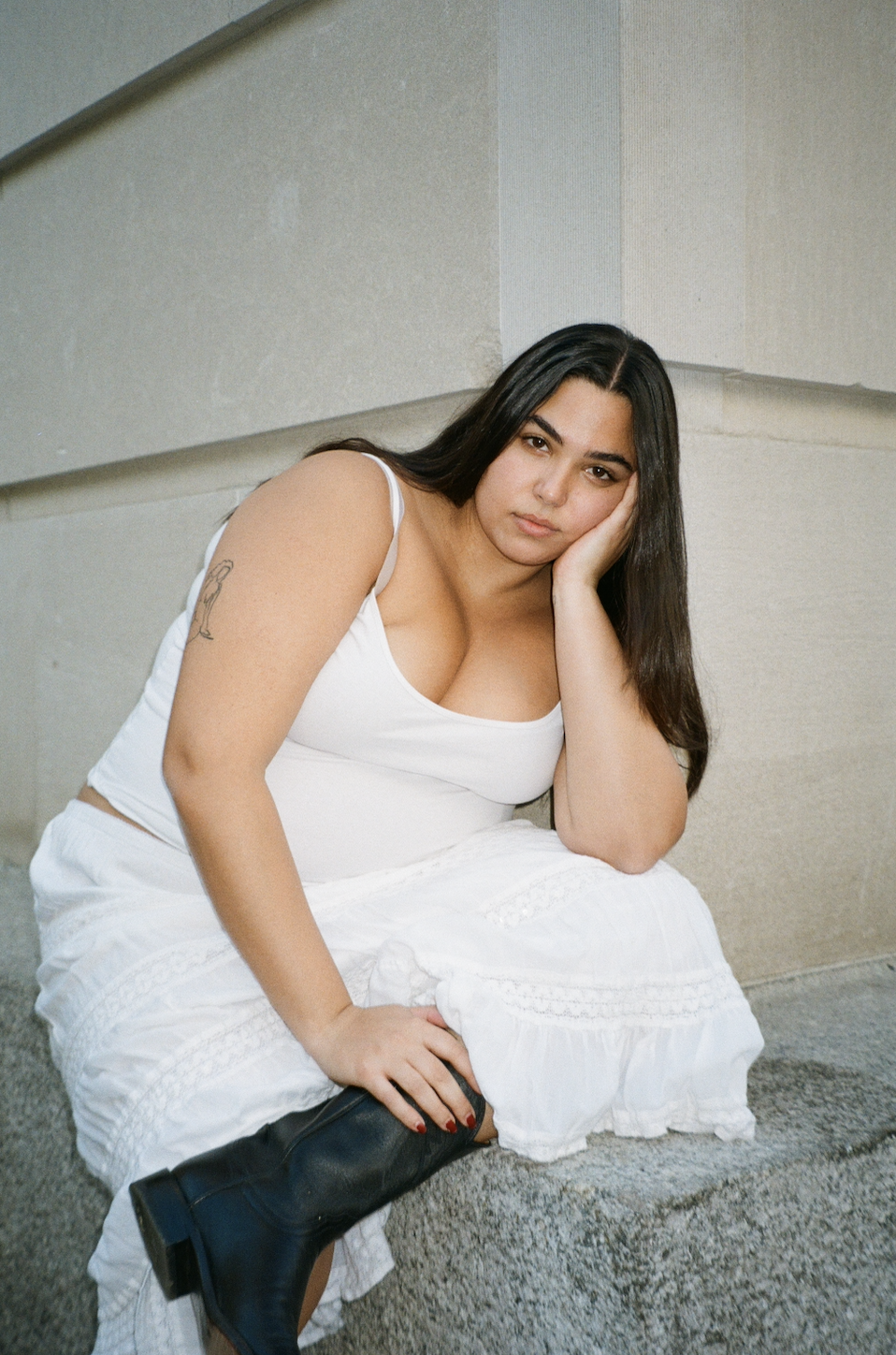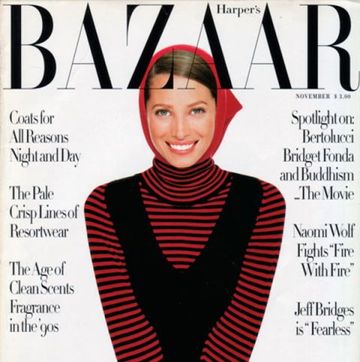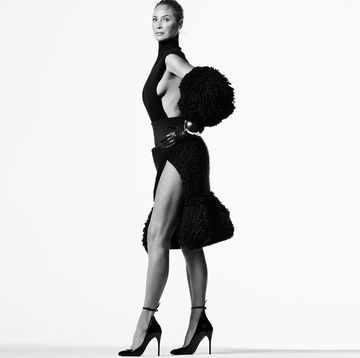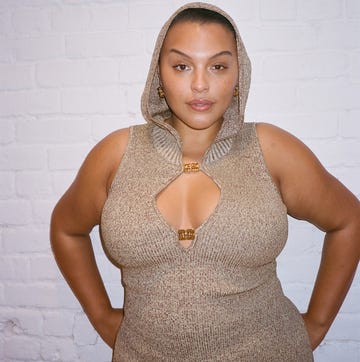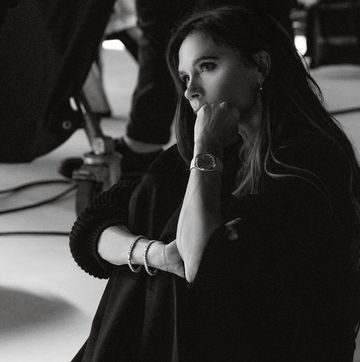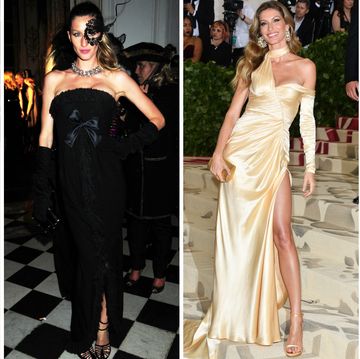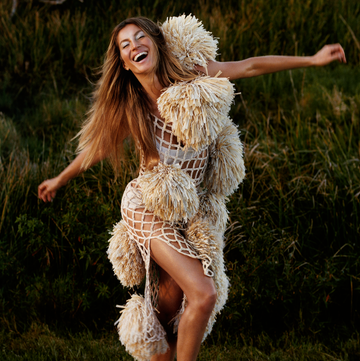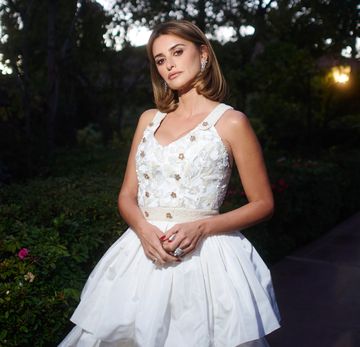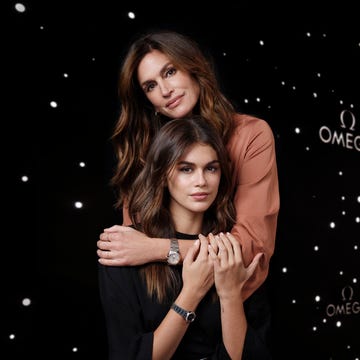In July 2020, curve model Ava Hariri-Kia was offered a professional contract, and all her dreams came true. She worked for two years in front of the camera and on the runway, until everything started to slow down. Hariri-Kia’s opportunities dwindled, and she eventually stopped getting booked for jobs. Earlier this year, she was let go from her agency.
There was a very visible lack of body diversity on the Fall 2024 runways, and the same can be said of the Spring 2024 collections. It’s become clear that any progress made for curve models in high fashion over the last few years has taken an abrupt and unfortunate turn. Hariri-Kia might be impacted by this shift, but she is not giving up. Below, she opened up to Harper’s Bazaar about her personal experience with the backward pendulum swing, her ongoing fight for systemic change in an industry she still loves, and what it’s been like over the last year to go from in-demand to brushed aside because of her size.
My older sister was an aspiring singer and songwriter. When she was 17, she met with a photographer in New York to take headshots for her EP. I was 13 then and had always wanted to be a model. I’d always made my mom take photos of me on her camera, so when we got to the studio, she asked the photographer if he could take a couple of pictures of me just for fun. After he wrapped with my sister, he told me to lose weight—30 pounds, to be exact—and come back. I was in the seventh grade, going through puberty, and weighed way above average. It was the first time someone had verbalized that something was inherently wrong with me, and it planted seeds of fear in my adolescent brain. Until then, I had been a happy, carefree, and trusting kid. But that day, I felt a piece of my inner child start to die.
Growing up, I was always bigger than the other girls. It was just who I was, and I accepted that—until the rest of the world told me I shouldn’t. Doctors made me and my family panic, my peers inadvertently taught me shame, and society preached that I should work hard to change. After many comments like that photographer’s, I began to believe all the noise.
That didn’t stop me from using fashion as a means of self-exploration. For a long time, clothes were an exclusionary space. Nothing fit me, and no one on billboards had a body like mine. Dressing rooms were my worst nightmares. But when I realized I could carve out my own space in fashion and use my personal style as a weapon, as a means to celebrate both my body and personality, my entire world expanded. I kept my interest private and quietly dreamed of modeling. I put up images of my heroes Ashley Graham and Paloma Elsesser on my walls, and felt at peace knowing through them that the opportunities did exist.
Once I arrived at university, I embraced my love of fashion publicly for the first time. When I learned that my school held an annual charity fashion show, I jumped at the opportunity to be more involved and learn more about how the industry worked. By my junior year, I was styling the entire show. I began to trust my sartorial eye and feel validated as both a consumer and curator of fashion.
Then Covid hit. I was in lockdown when I received an email from a top fashion magazine asking if I wanted to be featured as a student in an editorial they were running, which aimed to highlight 100 people who made up the fashion industry. Shocked, I immediately said yes. I had never let myself believe that one day I could be on the other side of the camera.
I so vividly remember that shoot day. When I stepped in front of the camera, something inside of me shifted. Instead of tensing up, my entire body relaxed. I exhaled, feeling at home in my skin for the very first time in years. The photographer, Ethan James Green, told me that he felt it too and offered to introduce me to agencies. I sobbed. A few weeks later, I met and signed with an agency. I went back to university that fall with the promise that, starting in July 2021, I was going to pursue my passion. I was so full of hope. Looking back now, though, I pity myself for being so naive.
When I entered the industry, it was at the height of what I like to call the “fat people renaissance.” Modeling finally began to look and feel more inclusive. I had idols and role models, people who had opened the door wide enough for the rest of us to start trickling in. After quarantine, it felt like marginalized bodies were less afraid to take chances. I truly believed that I was just like my peers, and I mistakenly thought I was going to be given the same kind of opportunity as the thinner models. But the truth is, the playing field was never level.
I ignored all the red flags. I ignored the fact that fashion is run by a select few, mostly cis males, who are focused only on making money. I ignored the fact that history is cyclical and that anything that happens in extremes doesn’t last. Everything that is “in trend” will one day be out. The pendulum swung all the way in one direction, and everyone from designers to casting directors to magazines was so focused on appearing “inclusive” that they ignored the signs it would ultimately swing back left. And boy, did it swing.
My first year of modeling felt incredible. I worked for amazing clients, met interesting people, and created some really beautiful art. Most of all, I saw myself making a tangible difference. Then, in front of my very eyes, it all started to fall apart. During Fashion Weeks, I stopped being sent to castings. Directors were asking to see me far less often, and when they did, I saw fewer and fewer curve bodies make it to the runway. Clients grew afraid of my size. I watched as plus-size friends—many of whom had been in the industry longer than me and are respected figures in fashion—started to question themselves. Did any of us belong here anymore? Did I?
Then the headlines started to run: Being extremely thin was back in. Fashion houses once again cut their larger sample sizes. Campaigns no longer looked for body diversity. Around 1 percent of all curve models walked the runway. The industry’s message was loud and clear: There was no longer space for me. If I wanted to see myself in fashion again, I’d have to carve out my own. This revelation watered those seeds of doubt the photographer’s words had planted in my brain all those years ago. And those dysmorphic, intrusive thoughts were being spoken out loud, to my face, by designers I respected.
Two years ago, I would never have wanted to talk about the body positivity movement, because honestly, I wasn’t sure I believed in it. I stand for body neutrality. I believe a body is a body, thin, fat, or otherwise. But the truth is, inclusivity is impossible without real systemic change. Fashion can’t bring in plus-size bodies when they’re profitable and then cast them aside the second the world’s eyes are no longer watching. The industry can’t bring us on board and then make all of us fight for the same tiny fragments of opportunity. How are we supposed to compete when we aren’t even let into the ring? No, the changes need to be made from the top down. It’s time for a new generation to rise, so that those same few girls, who are grateful yet overworked, can breathe; so that there is room for all bodies in every ad and editorial, and on every runway.
At the beginning of this year, I was let go by my agency. We agreed that our relationship had grown stagnant and uninspired and it was time to part ways. When I look back at our time together, I am filled with gratitude for the opportunities it afforded me. But I have also been forced to pause and take stock of my career. And in all honesty, it broke me a little bit. Once again, I asked myself: Is it even worth it?
Well, the answer is yes. I love fashion. I believe it to be one of the highest art forms and a real vehicle for change. And more importantly, I believe in myself. In my heart of hearts, I believe in my ability to make an impact. But I also believe the pendulum must stop swinging for fashion to move forward. It’s time we sit still with ourselves, and when we do, bodies will no longer be trends. I am not done fighting, and I refuse to allow my dreams to slip away. Instead, I believe they are evolving into something new and revolutionary.
So, I challenge you, fashion houses, casting directors, agencies, and magazines (including this one), to create real change now and for the future, not for just a moment or two. It shouldn’t be on marginalized bodies to make space for themselves in fashion, but on fashion to find space for us all.

